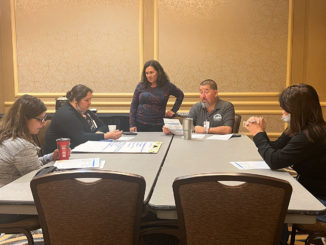With so many of our team members choosing to move on at this time, are you taking advantage of the valuable information that the exit interview can provide? When a team member leaves an organization, you are presented with the opportunity to:
- Identify what your organization is doing well.
- Pinpoint areas where you can strengthen your organization.
- Confirm the skill sets, experience and attributes needed for the job to enhance recruitment.
- Capture useful knowledge, contacts, tips, etc., from the exiting team member.
- Understand why the team member is leaving.
- Build goodwill.
Here are some tips to make your exit process a valuable tool for improvement in your organization.
- Develop an off-boarding checklist for the team member and the department manager.
- Be sure to obtain a resignation letter from the team member; you may wish to consider having a template available for team members to complete if necessary.
- Participation in an exit interview must be voluntary.
- Develop an exit interview form for use by the department manager or human resources.
- Schedule time to meet with the team member prior to departure, both department manager and human resources.
- Do not share the information unnecessarily with others in the organization. This will erode not only your integrity, but that of the exit process overall; making it so that exiting team members won’t participate!
In many organizations, a human resources team member is typically tasked with holding an exit interview. However, you should not shy away from having the department manager also hold an exit interview. While human resources may be best-suited for explaining benefit and pay-related exit topics, the department manager can play a critical role in gathering passwords, useful knowledge about scheduling, and work tasks related to the position that might otherwise get lost in the shuffle that often occurs when a team member is leaving.
Exit interviews can be face-to-face, in the form of a written survey (hard-copy or electronic), over the phone, or through a survey software program. Only face-to-face and telephone interviews allow you to truly explore responses and gain valuable insight in the moment. If you choose to conduct face-to-face exit interviews, it is helpful to use an exit interview form to capture key responses regarding the team member’s experience while employed in your organization. A useful tip is to provide the team member with the form prior to the meeting so that they know what topics are covered. Always explain the purpose of the exit interview, which is to collect valuable information about the team member’s experience so that the organization can improve and adapt. Be sure to inform the team member that their name will not be used. The process must have a level of anonymity that will prompt a team member to be forthcoming with their responses. Start with a friendly conversation to help the team member feel comfortable. Then review the responses given on the form with them, and if the form is blank, begin by exploring each question, making notes as you go.
However, some exiting team members may be more forthcoming with information if they can write, rather than say, their feelings. I recommend the use of an anonymous survey program such as SurveyMonkey or Qualtrics, so that a link can be easily emailed to a team member. If your organization would rather use a paper form, don’t ask for the team member’s name or signature on the form, only the department and position title. Remember, the objective is to gather information so that your organization can improve, and it is critical to remain open to the feedback.
What do we ask in an exit interview?
There are many questions that can be asked – how would you rate your benefits, what did you like most about working here, how would you rate your supervisor; and the list goes on. Here are some potential exit interview questions to consider that will help ensure you are gathering helpful, not harmful, feedback from those team members about to leave your organization.
Why have you decided to leave?
Did anything trigger your decision to leave?
What was the most satisfying aspect of your job? What was least satisfying?
What would you change about your job?
What would you improve to make our workplace better?
Do you have any tips to help us find your replacement?
Would you consider working again for us in the future?
How to wrap the exit interview
The most difficult part of the process is knowing when enough is enough. Don’t drag the meeting out and begin to get into the danger zone. Keep to the scheduled time as much as possible. Be sure to end on a positive note. While you don’t want to cut anyone off mid-sentence, begin wrapping things up with the simple technique of repeating a few key items that they shared with you and thanking the exiting team member for their service and feedback. Let them know that the exit interview information they shared was helpful and wish them the best in their new endeavor. Of course, if you are using a confidential online survey, you will want to include a simple statement of thanks and contact information should the exiting team member have a need to reach out later.




